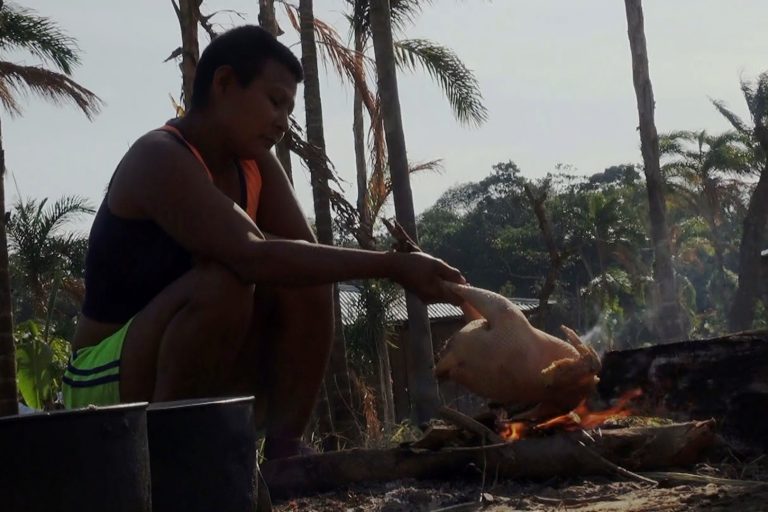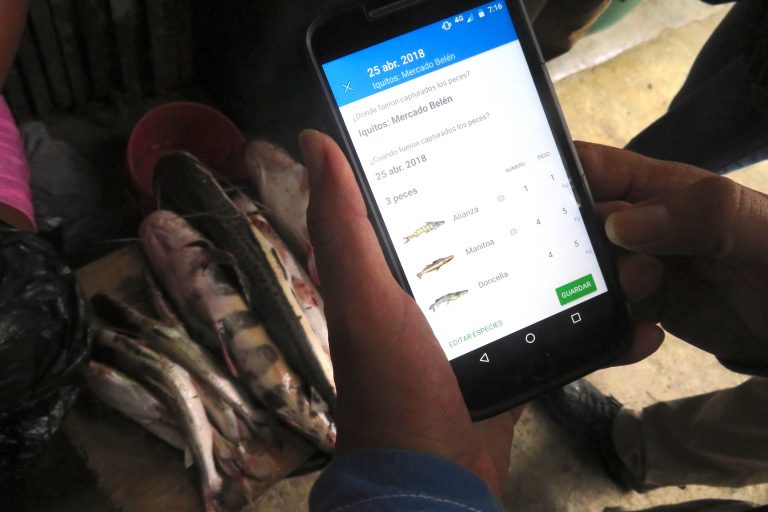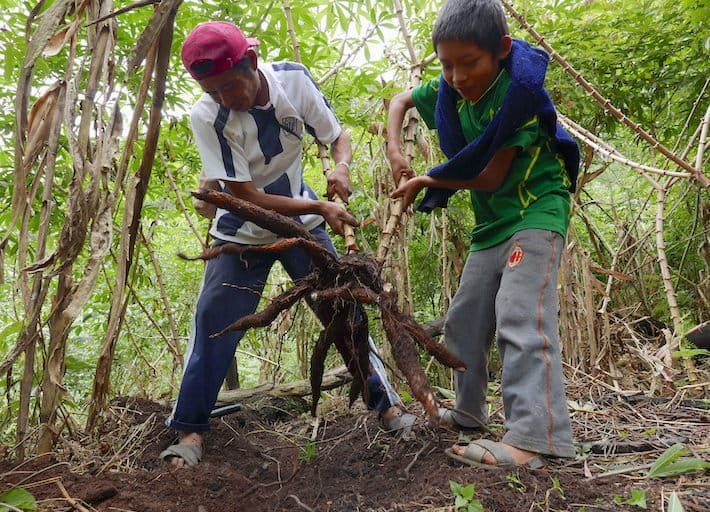Below are summaries of the most popular stories by our Spanish language service, Mongabay Latam, from the week of April 30 – May 6. Among the top articles: more than 20 families of the last nomadic indigenous peoples of Colombia face a serious food crisis. In other news, a new app allows fisherfolk and others in ports and markets to monitor fish in the Amazon river basin.
The image above of an elephant weevil (Orthorhinus cylindrirostris) from the vast Mongabay archive was the most popular on Latam’s social networks.
Colombia’s last nomadic tribe faces extinction

The Nukak Makú, the last nomadic indigenous, contacted peoples of Colombia, are on the brink of disappearance. Deforestation, invasions into their ancestral territories, displacement, along with a cultural and environmental degradation from bureaucracy, are making it impossible for the Nukak to manage their lands – or feed themselves.
Underwater spiders: the strange lives of intertidal spiders

A spider named for reggae legend Bob Marley is a new member of 15 species of intertidal spiders. At this point, scientists have registered intertidal spiders along the coasts of Australia, New Zealand, the south of Africa, the Pacific islands and India. The spider can stay under water for up to 24 hours due to a notable adaptation: small water repellent hairs, known as hydrophobic hairs, that trap air around it.
App enables citizen scientists to monitor fish and water quality in Amazon basin

An ambitious citizen science project that extends across Bolivia, Peru, Colombia and Ecuador proposes to create a volunteer network to monitor fish and evaluate water quality through the simple download of a cellphone application. Low internet access in rainforest communities presents the main challenge.
Nine thousand small turtles return home to the jungle in Peru

The Amazonian Rescue Center in Iquitos, Peru is caring for 9,000 turtles until they are ready to be released ino their native habitat in the Pacaya Samiria National Reserve. Their return is part of a repatriation process approved by the administrative authority of the Convention on International Trade in Endangered Species of Wild Flora and Fauna in Holland, where they were confiscated.
Peru: Indigenous Andean communities save forests from narcotraffickers

Seven Machiguenga indigenous communities seek to protect more than 260,000 hectares of forest in southern Peru from narcotrafficking. This area has the highest concentration (69%) of land dedicated to illegal coca cultivation. They seek recognition of part of their territory as a Regional Conservation Area.
Honduras: African palm hits the heart of Kawas Park

The majority of the 89 communities in the Jeanette Kawas National Park in northern Honduras are growing African palm, resulting in 11% deforestation of this protected area. Residues from fertilizers and chemicals used in the cultivation of African palm have also caused an accumulation of organic residues in Los Micos Lake.
Read about these stories in Spanish here.
